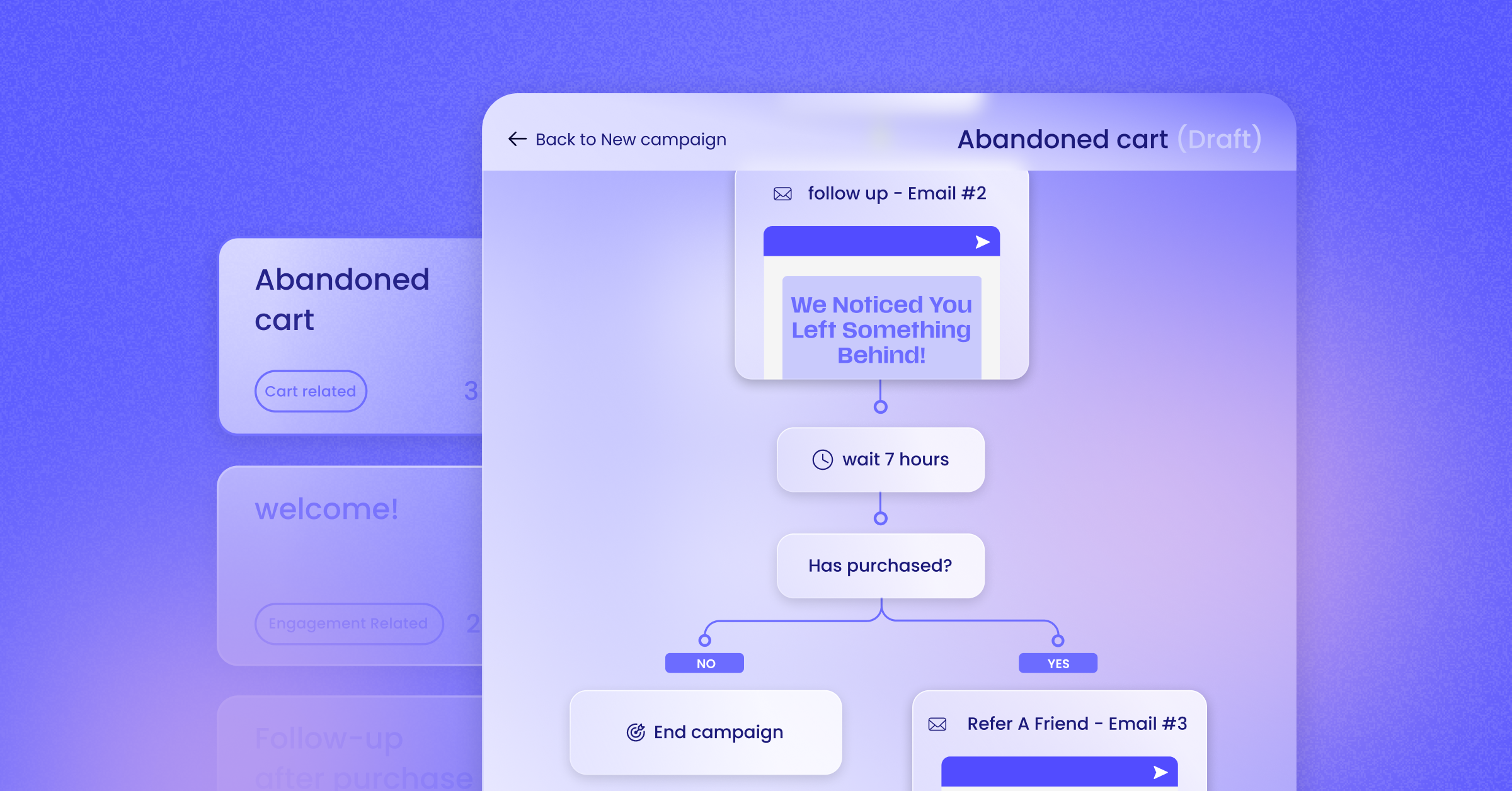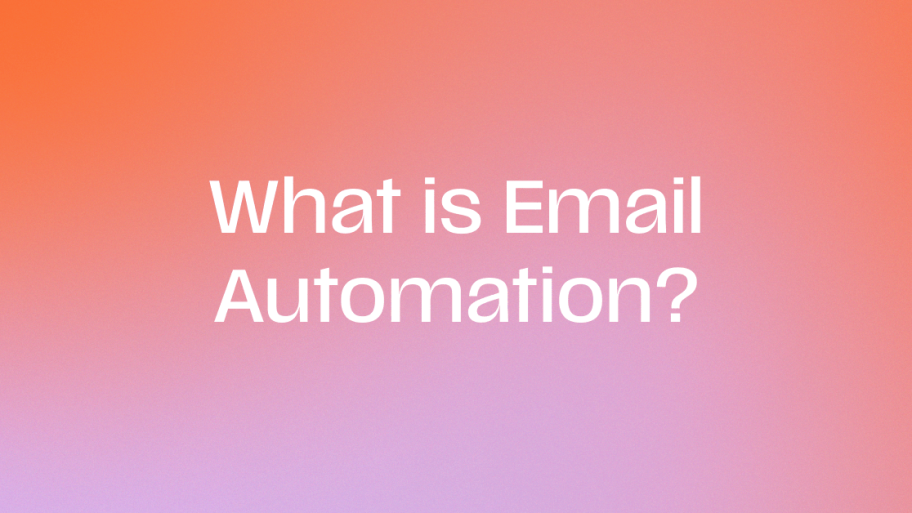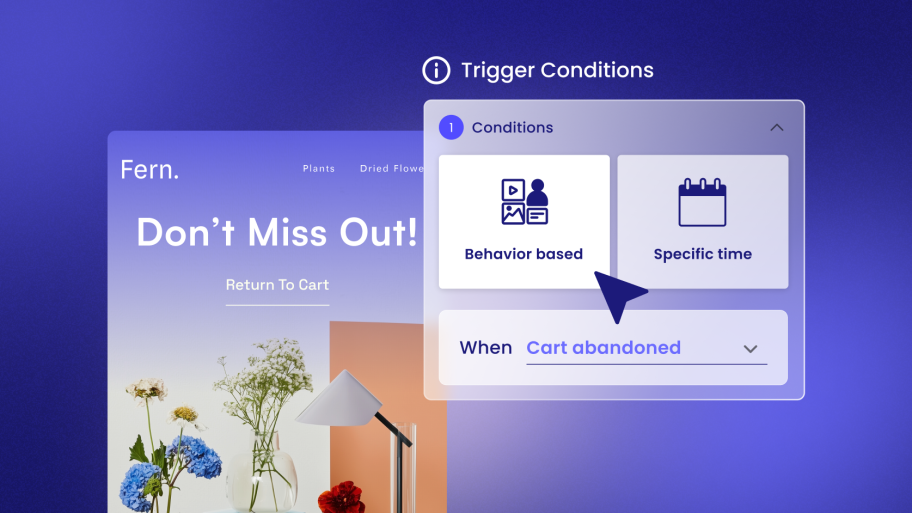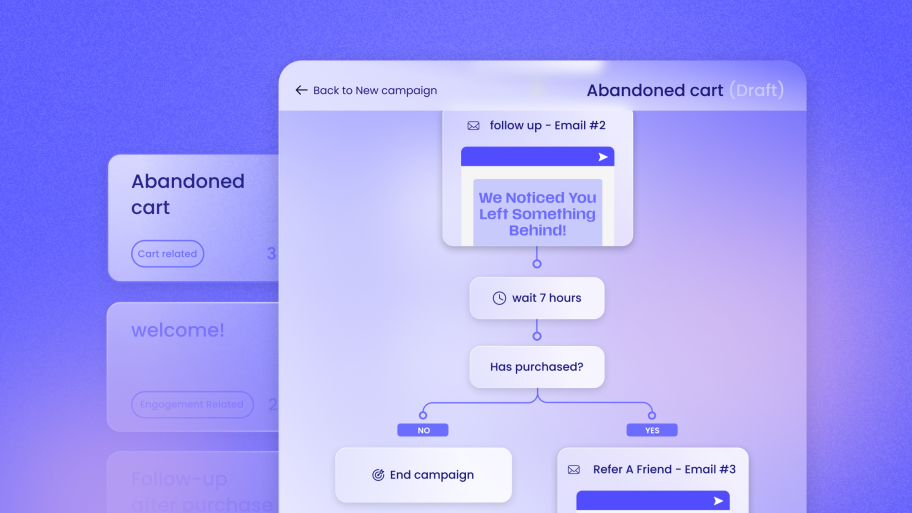Understanding why customers leave without buying is the first step toward fixing the problem. It’s rarely about a single issue. More often, it’s a combination of friction points in the shopping experience that turn an enthusiastic buyer into a frustrated window shopper. From unexpected shipping costs to a clunky checkout process, these obstacles can derail a sale in seconds. But what if you could plug those leaks? By identifying the core reasons for abandonment and implementing targeted strategies, you can create a smoother path to purchase, recover potentially lost sales, and build stronger customer relationships along the way. This guide will walk you through the why, the how, and the tools you need to turn abandoned carts into completed sales.
Understanding the “Why” Behind Cart Abandonment
Before you can solve the problem, you need to understand its roots. Cart abandonment isn’t random; it’s a reaction to specific issues in the customer journey. By dissecting the most common reasons shoppers leave, you can begin to build a more effective and user-friendly experience. These reasons often fall into three main categories: cost, convenience, and trust. When a customer encounters a roadblock in one of these areas, their motivation to complete the purchase drops significantly. Let’s explore the most frequent culprits that cause shoppers to click away.
The Impact of Unexpected Costs
The number one reason for cart abandonment, time and again, is unexpected extra costs. Shoppers feel blindsided when they reach the checkout page only to find that shipping fees, taxes, and other handling charges have inflated the total price. In fact, studies show that
48% of customers abandon their carts due to these surprise costs.
This creates a powerful psychological barrier. The price they had anchored in their mind suddenly changes, leading to a sense of distrust and frustration. This feeling of being misled can be powerful enough to make them abandon the purchase altogether, even if they were genuinely interested in the product. It breaks the implicit agreement you’ve formed with the customer about the value of their purchase. Transparency from the very beginning is crucial to managing customer expectations and preventing this all-too-common point of friction.
A Long or Complicated Checkout Process
In today’s fast-paced digital world, convenience is king. A lengthy or confusing checkout process is a major deterrent for modern shoppers. Research indicates that 18% of customers will abandon a purchase if the checkout process is too complicated. When a customer is ready to buy, the last thing they want is to navigate a maze of forms and unnecessary steps. The average checkout flow consists of over five steps and asks for nearly twice as many form fields as necessary, creating a significant burden for the user.
Each additional field they have to fill out and every extra click they have to make increases the likelihood that they’ll give up. Think about the last time you had to re-enter your shipping address after you already entered your billing address. It’s a small annoyance, but these little frustrations add up. The goal should be to make the journey from cart to confirmation as seamless and effortless as possible. A streamlined process respects the customer’s time and keeps their focus on the excitement of their new purchase, not the tediousness of the transaction.
The Barrier of Forced Account Creation
While gathering customer data is valuable for marketing, forcing users to create an account before they can make a purchase is a significant conversion killer. A remarkable 24% of shoppers have abandoned a cart because they were required to create an account. Many customers, especially first-time buyers, simply want to complete their purchase quickly without the commitment of setting up yet another online profile with a password they’ll likely forget.
Offering a guest checkout option is a straightforward and highly effective solution to this problem. It removes a major hurdle and caters to customers who prioritize speed and convenience above all else. You can always prompt them to create an account after the purchase is complete, using the information they’ve already provided. This approach provides a much better customer experience while still giving you an opportunity to build a long-term relationship. It turns the interaction from a demand into a polite suggestion.
Lack of Trust and Security Concerns
Trust is the non-negotiable foundation of e-commerce. Customers need to feel confident that their personal and financial information is safe when they make a purchase online. A lack of visible trust signals can cause hesitation and lead to cart abandonment. If a website appears unprofessional, has broken links, or lacks security badges, shoppers may question its legitimacy.
Displaying recognizable security logos from services like Norton or McAfee, customer reviews, and clear contact information can help build credibility. These elements act as visual reassurances that customers are dealing with a reputable business that values their security. Without these cues, especially on the page where they enter credit card details, the perceived risk of sharing sensitive information can easily outweigh their desire for the product.
Limited Payment and Shipping Options
Modern customers expect choices. A lack of flexible payment and shipping options can be a deal-breaker for many. If a shopper’s preferred payment method, like PayPal, Apple Pay, or a “Buy Now, Pay Later” (BNPL) service like Klarna, isn’t available, they may not be willing or able to complete the purchase. The e-commerce landscape is no longer one-size-fits-all, and stores that don’t adapt may lose out to more flexible competitors.
Similarly, shipping options matter immensely. Some customers prioritize speed and are willing to pay a premium for expedited delivery, while others prefer a more economical, slower option to save money. Unclear delivery timelines (“arrives in 5-15 business days”) are also a common reason for abandonment, as they create uncertainty. Providing a variety of clear choices for both payment and shipping caters to a wider range of customer needs and preferences, dramatically increasing the likelihood of a successful conversion.
Strategies to Reduce Cart Abandonment
Now that we’ve identified the primary reasons for cart abandonment, let’s focus on actionable strategies to address them. By making targeted improvements to your website and customer communication, you can create a smoother shopping experience that encourages more customers to complete their purchases. These strategies range from technical optimizations on your website to proactive communication that re-engages shoppers who have already left. The key is to create a holistic approach that addresses potential issues at every stage of the customer journey.
Optimize Your Checkout Process
A streamlined checkout process is one of the most effective ways to reduce cart abandonment. The goal is to minimize friction and make it as easy as possible for customers to give you their money.
- Simplify Forms: Only ask for the information that is absolutely necessary to complete the order. Every extra field is another opportunity for the customer to drop off. Audit your checkout form. Do you really need their phone number? Can you combine the “First Name” and “Last Name” fields into a single “Full Name” field? Hide optional fields like “Address Line 2” behind a link unless needed.
- Offer Guest Checkout: As mentioned earlier, providing a guest checkout option is crucial. Make it the most prominent and easy choice for new customers to reduce hesitation. The button should be as large and appealing as the “Log In” button.
- Implement a Progress Indicator: For multi-page checkouts, a visual progress bar shows customers where they are in the process (e.g., Shipping > Payment > Review). This manages expectations and reduces the feeling of being stuck in a never-ending sequence of steps.
- Enable Autofill and Address Validation: Use tools that allow browsers to automatically fill in saved information like names and addresses. Additionally, an address validation tool can prevent errors and the frustration that comes with shipping delays due to a typo.
- Optimize for Mobile: With a significant portion of e-commerce traffic coming from mobile devices, a mobile-friendly checkout is non-negotiable. This means large, easy-to-tap buttons, dynamic keypads for different types of information (e.g., a number pad for credit card details), and a layout that is easy to navigate on a small screen without pinching and zooming.
Be Transparent About Costs
Surprise costs are a major conversion killer, so transparency is essential. All costs associated with a purchase should be communicated clearly and early in the shopping process.
- Display Shipping Costs Upfront: Don’t wait until the final step of the checkout to reveal shipping fees. Provide a shipping calculator on the product or cart page that uses a zip code to estimate costs. Being upfront about these charges builds trust and prevents sticker shock at the last minute.
- Clearly State Taxes and Fees: Similarly, any applicable taxes or handling fees should be clearly itemized. A detailed breakdown of the total cost helps customers understand what they are paying for and reduces the perception of hidden charges.
- Promote Free Shipping: If you offer free shipping, make sure it’s highly visible throughout your website—in the header, on product pages, and in the cart. This is a powerful incentive that can significantly reduce cart abandonment. If you have a free shipping threshold (e.g., “Free shipping on orders over $50”), promote it with a dynamic bar that tells customers how much more they need to spend to qualify. This not only encourages larger orders but also keeps the benefit top-of-mind.
Build Trust and Credibility
Building trust is an ongoing process that involves multiple elements of your website. A trustworthy site makes customers feel more comfortable completing a purchase.
- Showcase Social Proof: Customer reviews and testimonials are incredibly powerful. They provide unbiased validation of your products and brand. Displaying star ratings and written reviews on product pages can significantly boost a shopper’s confidence. Go a step further by showcasing user-generated content (UGC), like customer photos on Instagram, to create an authentic connection.
- Display Security Badges: Prominently display logos of trusted payment gateways (Visa, Mastercard, PayPal) and security certificates (like SSL) to reassure customers that their data is secure. The best place for these is near the “Complete Purchase” button, right where the user might feel a moment of hesitation.
- Provide Clear Contact Information and Return Policies: Make it easy for customers to get in touch with you if they have questions. A visible phone number, email address, and a link to a clear, fair return policy reduce the perceived risk of making a purchase. It shows that a real business with real people stands behind the products.
Recovering Lost Sales with Proactive Communication
Even with a perfectly optimized website, some customers will still abandon their carts. They might get distracted, need more time to think, or be comparing prices. This is where a proactive communication strategy comes in. By reaching out to these shoppers, you can remind them of what they left behind and entice them to come back and complete their purchase.
Tools that are native to your website’s platform can be particularly effective for this. For example, a communication toolkit designed specifically for WordPress and WooCommerce can seamlessly integrate into your existing workflow. This allows you to manage everything from email and SMS campaigns to audience segmentation directly from your WordPress dashboard, eliminating the complexities of syncing data with external platforms.
The Power of Automated Email and SMS Campaigns
Automated email and SMS messages are the cornerstones of a successful cart recovery strategy. These timely reminders can be incredibly effective at bringing shoppers back to your site.
Crafting Effective Abandoned Cart Emails
An automated abandoned cart email series allows you to connect with customers at different intervals after they’ve left your site. A typical and effective sequence includes three emails:
- The Gentle Reminder (Sent 1-4 hours after abandonment): This first email is a simple, helpful nudge. The goal is to overcome simple distractions.
- Subject Line Idea: “Did you forget something?” or “Your items are waiting for you.”
- Body: Keep it light and customer-service-oriented. Remind the customer about the items they left in their cart with high-quality images. Provide a single, clear call-to-action button that links directly back to their pre-populated cart.
- The Follow-Up (Sent 24 hours later): This email can address potential questions or highlight the value of your brand.
- Subject Line Idea: “Still thinking it over? Your cart is saved.”
- Body: Reiterate the value of the products. You might include a top-rated customer review for one of the items in their cart or links to your FAQ and shipping policy pages. This is about building confidence.
- The Incentive (Sent 3-7 days later): If the customer still hasn’t returned, a final email with a compelling incentive can be the push they need to make a decision.
- Subject Line Idea: “A special offer just for you” or “Complete your order with 10% off.”
- Body: Offer a small, time-sensitive discount code or an offer for free shipping. Create a sense of urgency by mentioning that the offer expires soon or that their cart will be cleared.
Leveraging SMS for Immediate Engagement
SMS marketing offers a more immediate and personal way to reach customers. Since 90% of text messages are read within three minutes, it’s a powerful channel for time-sensitive reminders.
An effective abandoned cart SMS is short, direct, and includes a clear link back to the cart. For example: “Hi [Name], you left some great items in your cart at [Store Name]! They’re saved for you here: [link]. Complete your order before they’re gone!” You can also create a sense of urgency or offer a discount via SMS. However, it’s critical to have explicit consent from customers to send them marketing texts and to be mindful of timing and frequency to avoid being intrusive. Combining SMS with email creates a multi-channel approach that can significantly increase your recovery rates.
A truly integrated communication toolkit makes setting up these automated flows straightforward. Look for solutions with pre-built templates for common scenarios like abandoned carts, welcome series, and customer re-engagement. This “set-and-forget” approach simplifies ongoing management while delivering powerful results.
Using Exit-Intent Popups
Exit-intent popups are another effective tool for reducing cart abandonment in real-time. This technology detects when a user’s cursor moves towards the top of the browser window, indicating they are about to leave your website, and displays a targeted message. This is your last chance to capture their attention before they’re gone for good.
An effective exit-intent popup on a checkout page might offer an immediate incentive, such as a 10% discount or free shipping, to encourage the shopper to complete their purchase right then. Alternatively, for more complex products, the popup could offer help via live chat to answer any last-minute questions that might be holding them back. The key is to make the offer relevant and valuable enough to overcome their reason for leaving.
The Role of a WordPress-Native Communication Toolkit
For businesses running on WordPress and WooCommerce, managing these various communication channels can become complex. Juggling different plugins and external marketing platforms can lead to data syncing issues, a fragmented user experience, and a lot of administrative headaches. This is where a communication toolkit built specifically for the WordPress ecosystem can be a game-changer.
Send by Elementor is an example of such a solution. It is designed from the ground up to be a WordPress-native toolkit, meaning it integrates seamlessly into the environment that web creators already know and trust. This eliminates many of the common pain points associated with third-party marketing tools.
Seamless Integration and Simplified Workflow
A key advantage of a WordPress-native tool is the unified experience it provides. Instead of logging into multiple dashboards, you can manage your email marketing, SMS campaigns, automation flows, and audience segmentation all from within your WordPress admin area. This not only saves time but also ensures that your data is always in sync.
When a customer abandons a cart in your WooCommerce store, the information is immediately available to trigger an automated recovery campaign. There are no delays or complex API connections to worry about. This seamless flow of information is crucial for delivering timely and relevant messages. For web creators and agencies, this simplifies client management and lowers the barrier to entry for offering marketing automation services.
Key Features for E-commerce Growth
A comprehensive communication toolkit should offer a range of features designed to help you reduce cart abandonment and grow your business. Here are some of the essential features that make a real difference:
- Email and SMS Marketing & Automation: The ability to design, send, and automate campaigns for both email and SMS from a single platform is fundamental.
- Marketing Automation Flows: Pre-built and customizable workflows for common e-commerce scenarios, such as abandoned carts, welcome series for new customers, and re-engagement campaigns for inactive ones, are incredibly valuable.
- Audience Segmentation: The power to group your contacts based on their behavior (like cart abandonment), demographics, and purchase history allows for highly targeted and personalized messaging. For example, you can send a different recovery offer to a high-value cart than to a cart with a single low-cost item.
- Drag-and-Drop Email Builder: An intuitive email builder with ready-made templates makes it easy to create professional and responsive emails without needing to be a design expert.
- Real-Time Analytics: The ability to track campaign performance, revenue attribution, and customer engagement directly within your WordPress dashboard is essential for understanding what’s working and demonstrating ROI to clients. This proves the value of your marketing efforts in a clear, tangible way.
By consolidating these essential marketing tools into a single, WordPress-native platform, you can simplify your marketing efforts while amplifying your results. This allows web creators to focus more on strategy and less on managing a complex and fragmented tech stack, ultimately enabling them to provide more value to their clients and build long-term, recurring revenue streams.
Final Thoughts
Reducing cart abandonment is not about finding a single magic bullet. It’s a continuous process of refinement, involving a holistic look at your customer’s journey and systematically removing the points of friction that cause them to leave. From being transparent about costs to optimizing your checkout process and implementing a proactive, multi-channel communication strategy, every improvement you make contributes to a better shopping experience.
By understanding the psychology behind why shoppers abandon their carts and addressing those core issues, you can significantly increase your conversion rates and recover a substantial amount of lost revenue. For those in the WordPress ecosystem, leveraging a native communication toolkit can make this process even more efficient and effective. By simplifying the technical aspects of marketing automation, these tools empower you to build stronger, more profitable relationships with your customers. The result is not just more completed sales, but a more loyal customer base that trusts your brand and keeps coming back.




